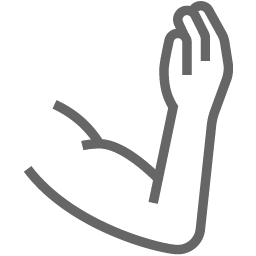Lymphoedema management – Procedures on the treated side
Low risk medical procedures (such as injections, blood tests, or intravenous administration of medicines) can be performed on the arm of the treated side if needed, as such procedures will not cause or worsen lymphoedema. In patients with lymphoedema, blood pressure monitoring on the arm of the treated side should depend on clinical need.
When informing people with breast cancer about the risk of developing lymphoedema, advise them that: they do not need to restrict their physical activity; there is no consistent evidence of increased risk of lymphoedema associated with air travel, travel to hot countries, manicures, hot-tub use or sports injuries; there is no consistent evidence of increased risk of lymphoedema associated with medical procedures (for example, blood tests, injections, intravenous medicines and blood pressure measurement) on the treated side, and the decision to perform medical procedures using the arm on the treated side should depend on clinical need and the possibility of alternatives
Conditional 1
How this guidance was developed
This recommendation was adapted from the NICE 2018 guidelines (UK). The source recommendation was based on a systematic review of the evidence conducted in September 2017. The strength of the recommendation could not be determined from the wording and is more of an evidence statement. The adaption clarified that low risk medical procedures can be performed on the affected side without fear of causing or worsening lymphoedema. It was acknowledged that there is insufficient evidence to support or not support blood pressure monitoring of the treated arm, hence the decision should be based on clinical need.
Lymphoedema management – Procedures on the treated side
Low risk medical procedures (such as injections, blood tests, or intravenous administration of medicines) can be performed on the arm of the treated side if needed, as such procedures will not cause or worsen lymphoedema. In patients with lymphoedema, blood pressure monitoring on the arm of the treated side should depend on clinical need.
This recommendation was adapted from the NICE 2018 guidelines (UK). The source recommendation was based on a systematic review of the evidence conducted in September 2017. The strength of the recommendation could not be determined from the wording and is more of an evidence statement. The adaption clarified that low risk medical procedures can be performed on the affected side without fear of causing or worsening lymphoedema. It was acknowledged that there is insufficient evidence to support or not support blood pressure monitoring of the treated arm, hence the decision should be based on clinical need.

